All products featured are independently chosen by us. However, SoundGuys may receive a commission on orders placed through its retail links. See our ethics statement.
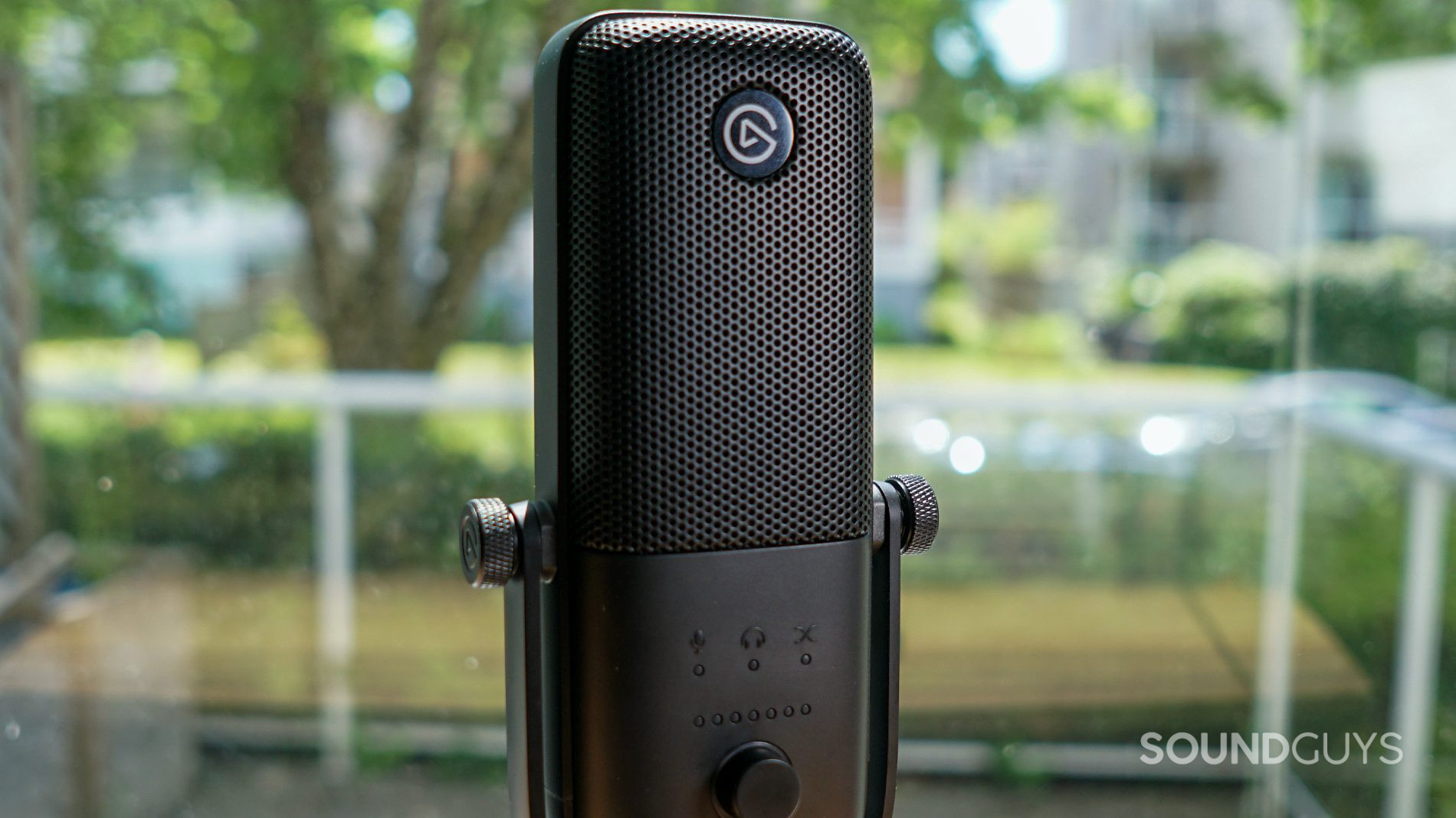
Elgato Wave:3
June 18, 2020
Original: $179 USD
Mic: 153 x 66 x 40 mm
Mic and mount: 280g
Base: 305g
20MAB9901
Elgato, a Corsair subsidiary, has been around for years—its affordable capture cards have made it one of the most important brands in live streaming. However, up until now, the company’s products have largely been confined to interfaces like stream decks and game capture devices. With the Elgato Wave:3 microphone, that’s about to change. Aimed at the same needs as something like a Blue Yeti X, this is a mic for the podcaster, Twitch streamer, and online caller.
Many compact microphones target the same group, for similar prices to boot—how’s this one stack up? We spent a week with the Elgato Wave:3 to find out.
Editor’s note: This review was updated on October 26, 2022, to update the formatting, add FAQ answers, and mention the Elgato Wave DX.
Streamers looking for something to easily link up with their streaming setup can enjoy this sleek mic, along with podcasters who need something that plugs in via USB. The Wave:3 is hassle-free, has its own stand, and is a set-it-and-forget-it mic that also works well for frequent conference callers.
What is it like using the Elgato Wave:3?
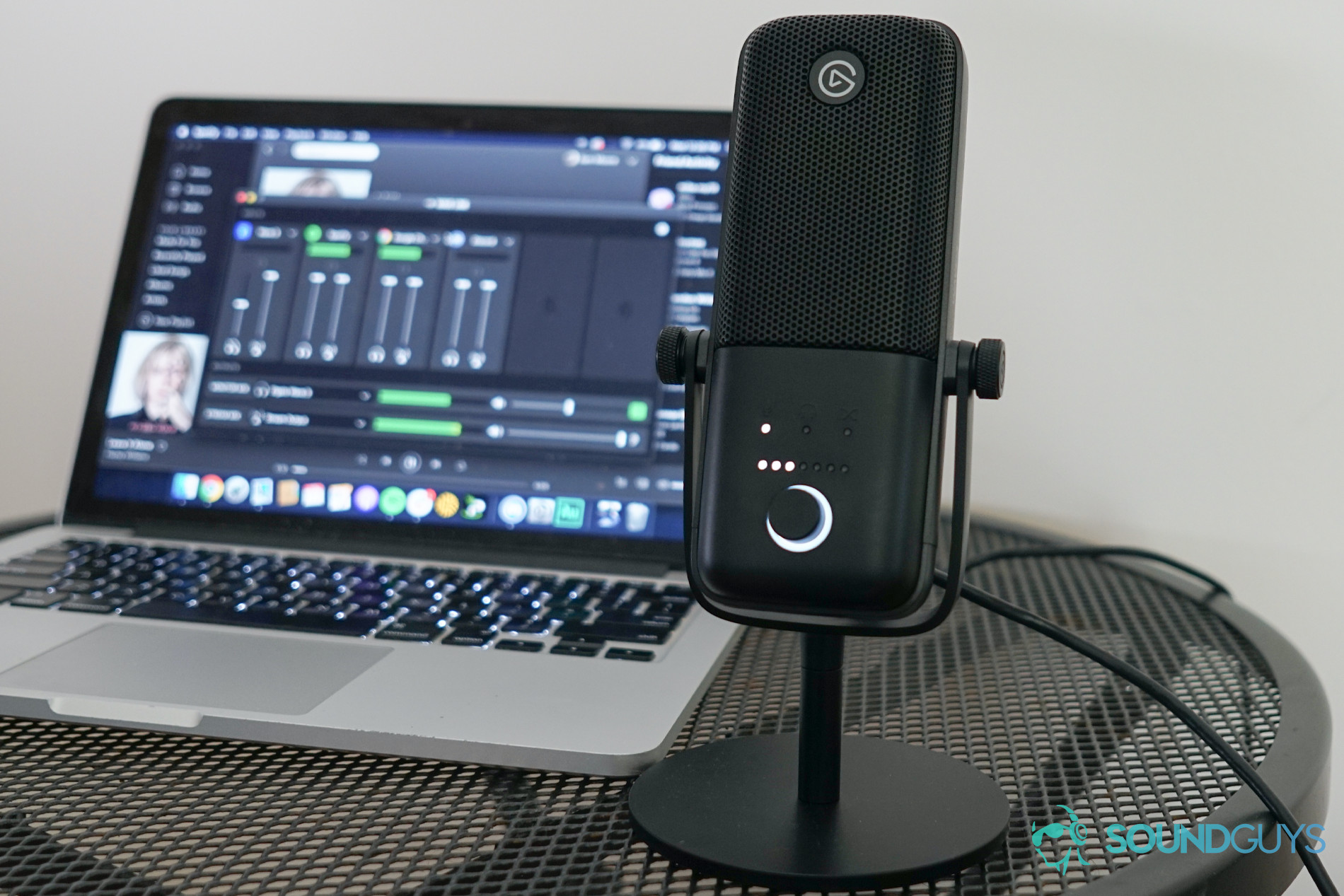
There’s a lot to like about the build of the Elgato Wave:3. The mic itself is made of black metal and hard plastic with a brushed matte texture. It’s compact and feels sturdy—nothing is rattling around, and the dial feels satisfyingly firm. Even the mute sensor at the top feels nice.
The mic has a plastic mount that screws into a weighted metal stand. The stand is actually quite nice, with a rubberized bottom, and some real heft to it. However, unlike everything else in this package, the plastic mount feels a little flimsy—it’s something that would concern me regarding long-term durability. Two bolts position the mic between the mount, and you can unscrew them relatively easily (which makes sense, given that Elgato sells a suspended shock mount separately).
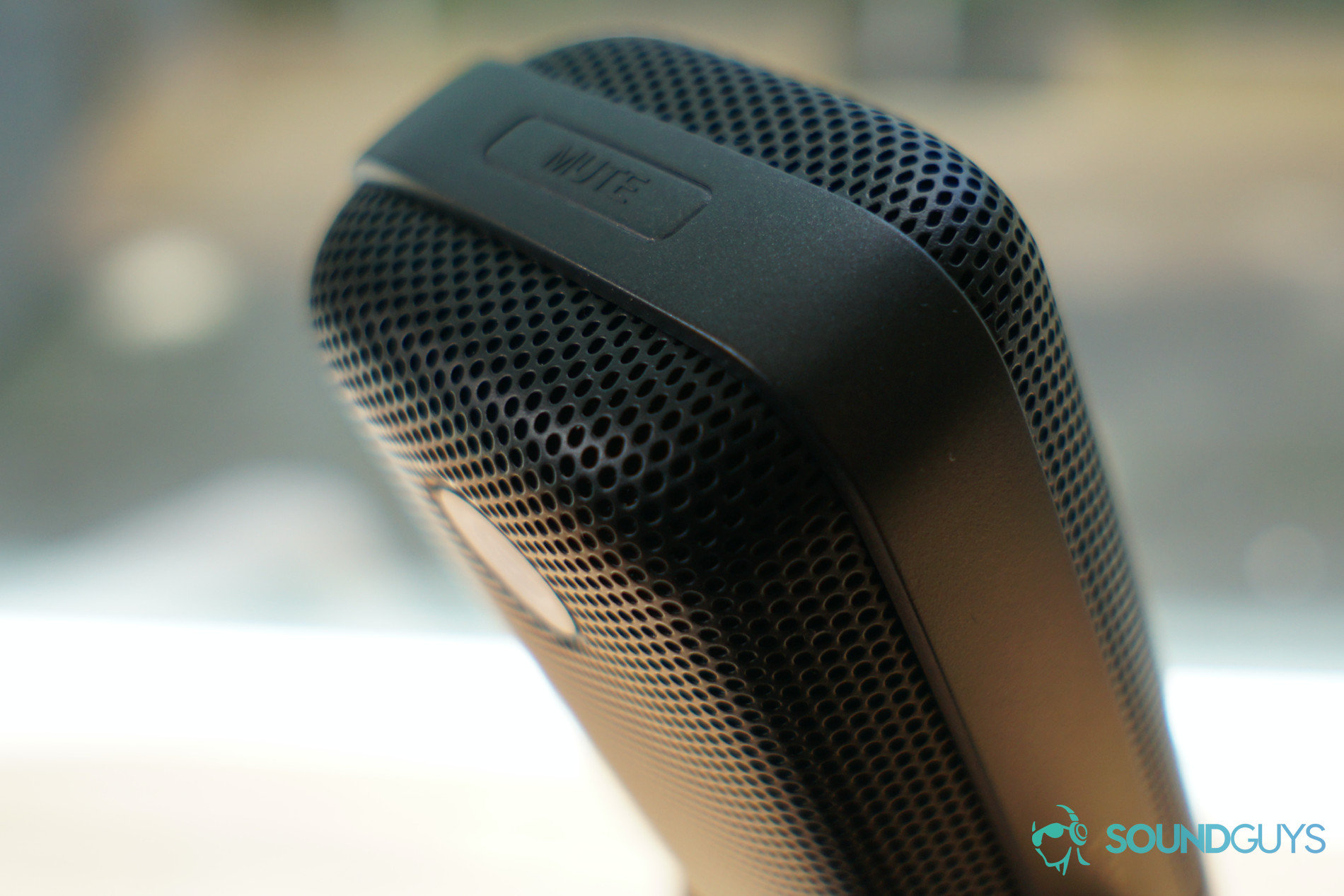
All told, this feels like a well-built device: the Elgato Wave:3 classic aesthetic means it blends in well with most home office, streaming, and gaming setups. Its compact design seems great for travel too, but is a bit more obtrusive than the Blue Ember XLR microphone.
How do you control the Elgato Wave:3?
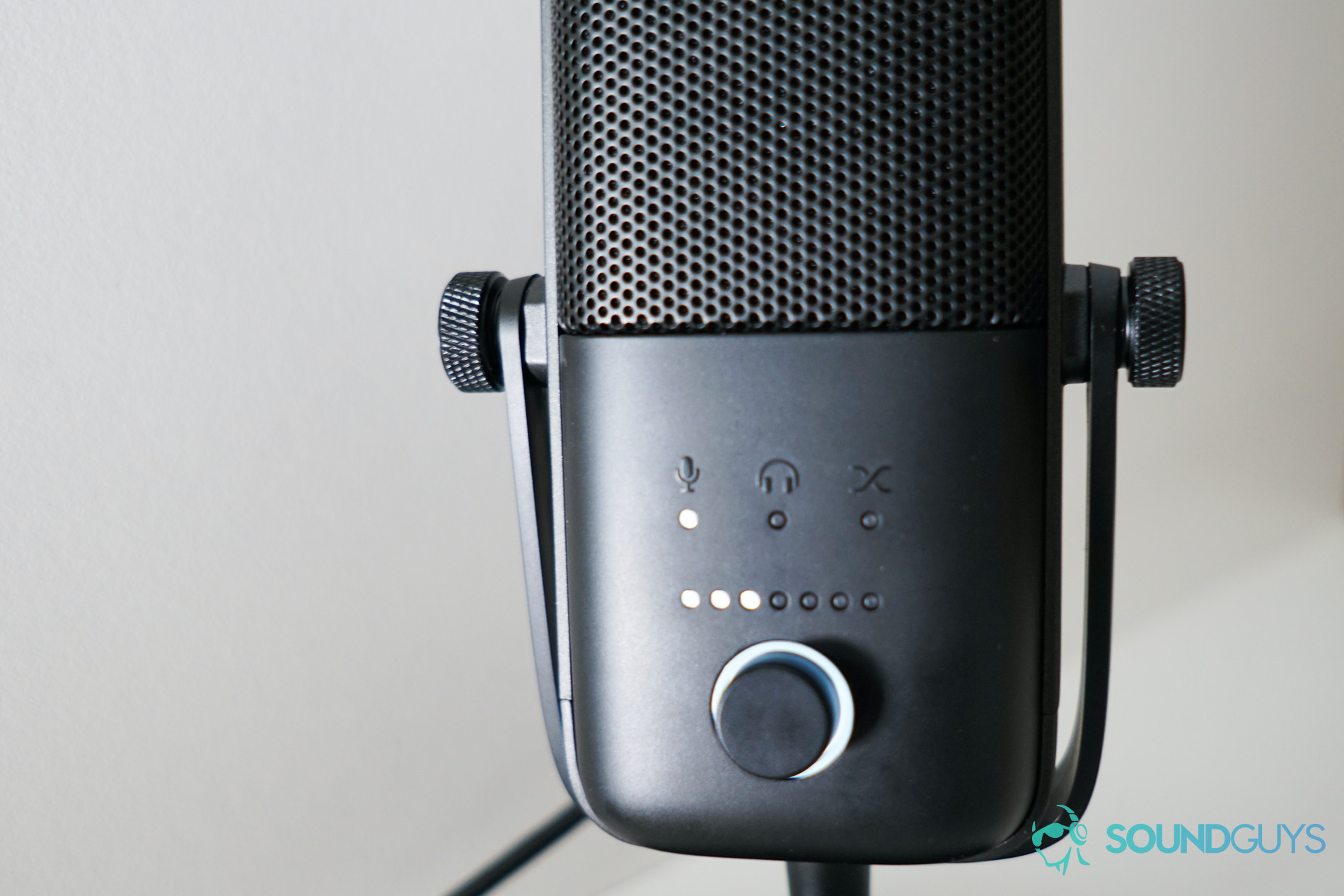
The interface for the Wave:3 is pretty straightforward. A dial on the front clicks in so you can cycle through its different volume options. The back of the mic features a USB-C port and 3.5mm headphone jack for monitoring. There’s also a touch-sensitive sensor at the top of the microphone for muting—tap it, and the LED ring around the dial will turn red to indicate it’s muted; it’s similar to what we’ve seen from the HyperX Quadcast mic. The controls all feel intuitive, and take virtually no time to get used to.
How do you use the Elgato WaveLink software?
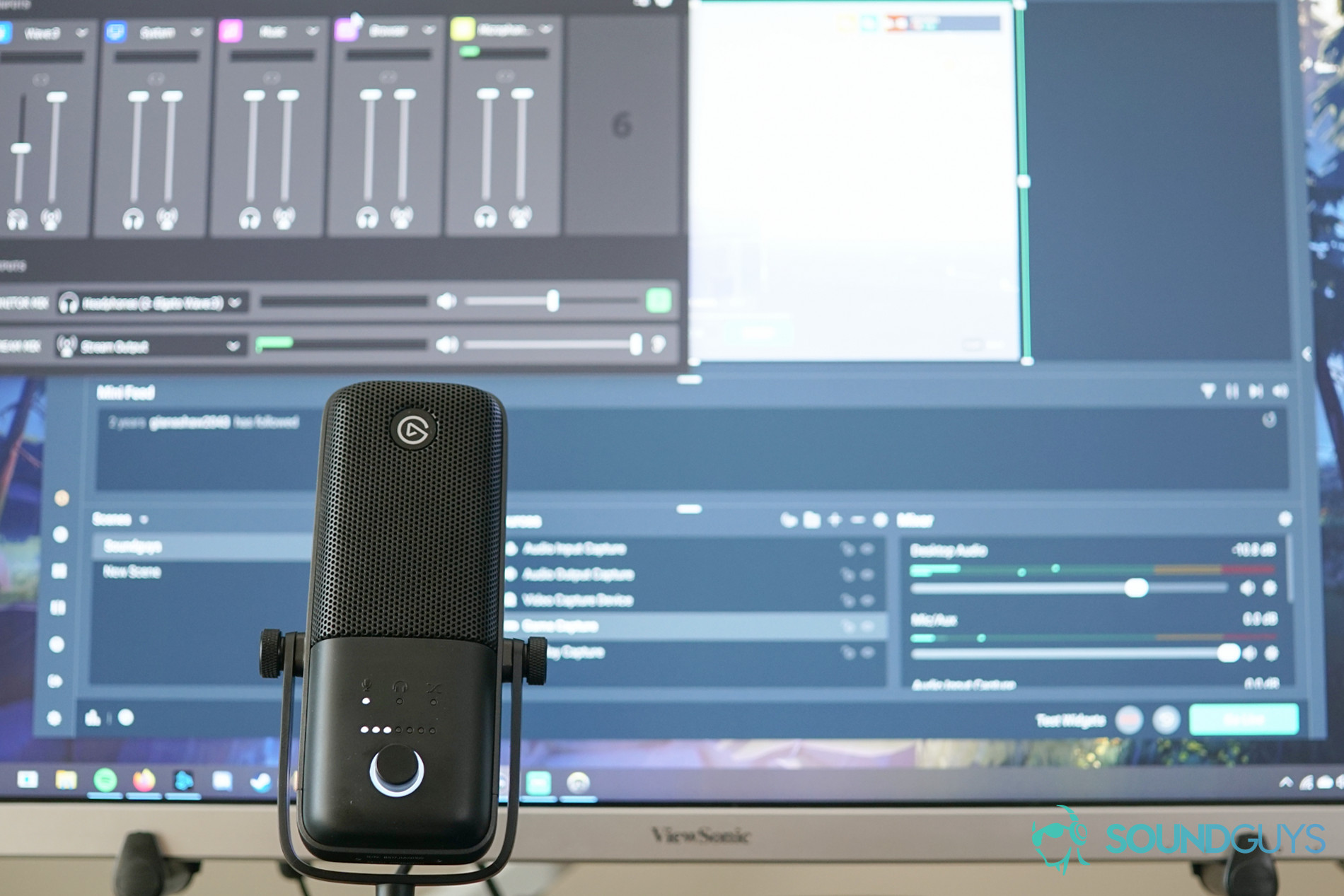
The Elgato Wave:3 is great for various home recording needs, but it’s aimed at streamers, like everything else the company makes. A big part of that appeal also comes from the mic’s software complement, WaveLink. The app is lean and slickly designed and clearly designed for audio source organization.
If you’ve ever used a program like VoiceMeeter or any of its varieties, WaveLink serves the same function—it’s a virtual audio mixer that gathers up all the different programs and browser windows generating sound, and rolls them into a single audio output source. For a Twitch streamer, this can be a godsend, because you only need one audio source for everything on your computer, but you can still manage all the different output levels in WaveLink—all without needing to buy a physical mixer. It’s less useful for people who don’t need that kind of organization, but like VoiceMeeter, it can also be great for rolling different types of audio into online calls.
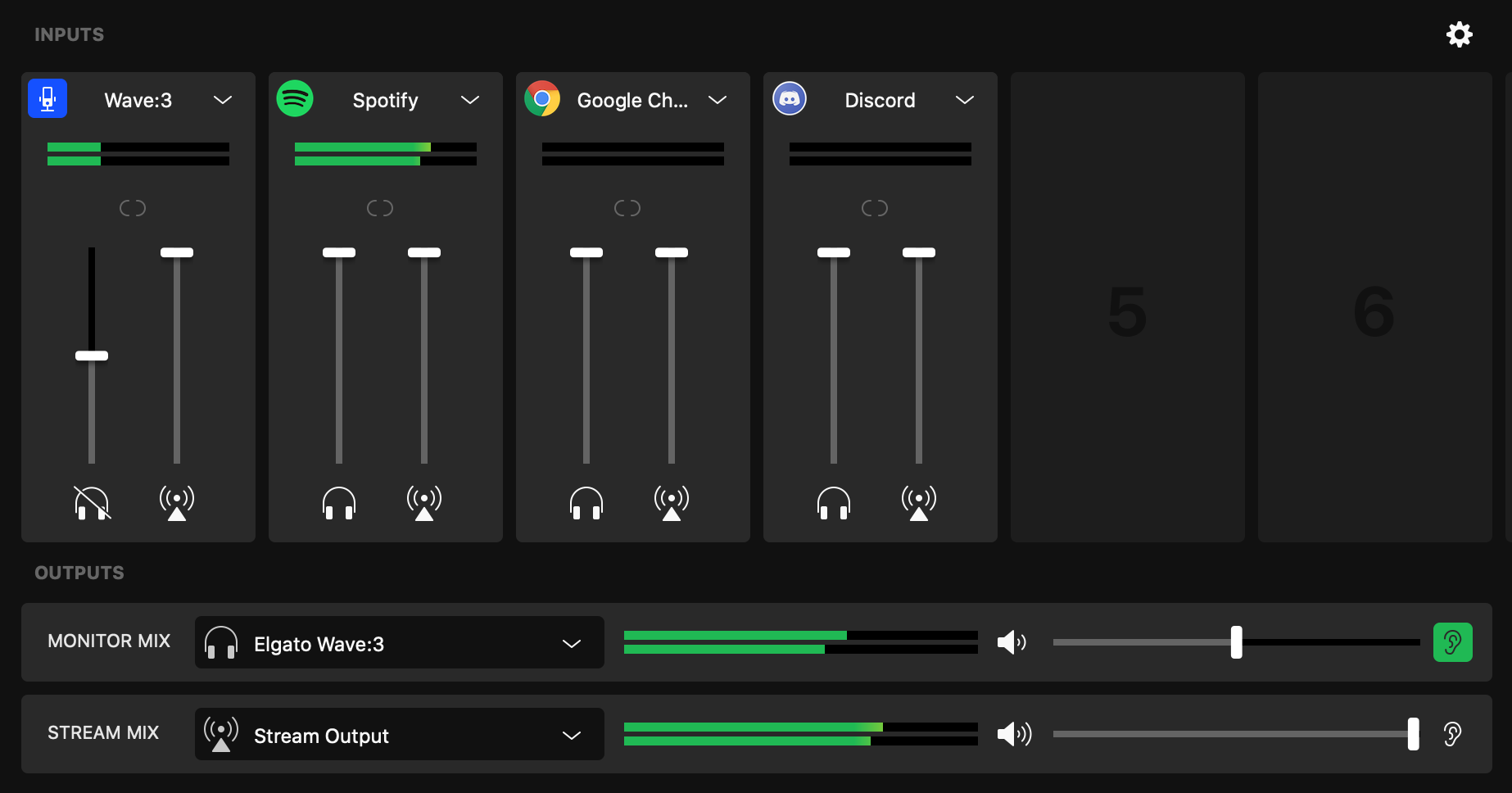
Gamers who just have a game, Discord, and maybe Spotify running the background will probably have little use for WaveLink, especially if they’re running single-monitor setups. However, if you’ve got a complicated audio situation, WaveLink could be an invaluable resource.
How does the Elgato Wave:3 connect?
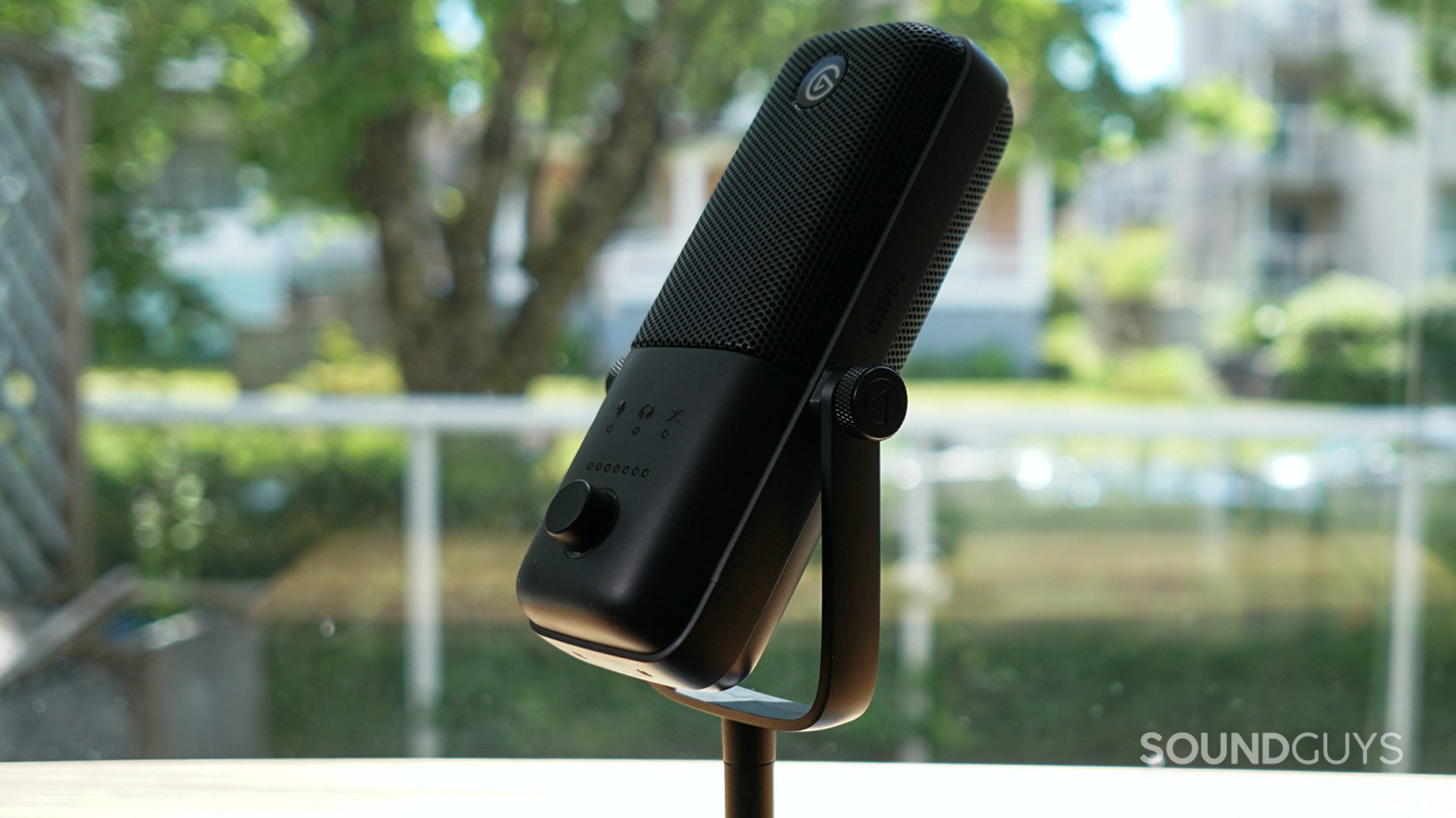
Like many detachable USB microphones, the Elgato Wave:3 is geared toward making your audio setup simpler. Setting it up is easy: just plug it into your computer, and you’re ready to record. The cord that comes with the mic uses USB-A to connect to your PC, but the mic itself actually uses USB-C, so connecting it to those ports is straightforward too.
How does the Elgato Wave:3 sound?
The Elgato Wave:3 has a sound profile tailored to the needs of podcasters and live streamers. Basically, it’s great for spoken word content.
While the mids and highs are accurate, there’s a pronounced de-emphasis in the sub-bass range. This isn’t such a bad thing for voice recordings, as it counters the proximity effect, where bass gets boosted from leaning in close—a common occurrence when you’re recording a podcast or YouTube video in a less formal recording environment. Those with very deep voices don’t need to worry, as the roll-off actually occurs at a lower frequency than what most would consider the vocal range.
Elgato Wave:3 microphone demo (Non-standardized):
Further emphasizing this microphone’s usefulness for spoken word content is its built-in Clipguard feature, which automatically limits the audio you record to avoid accidental digital overs. When the headset first launched, you couldn’t turn it off, but subsequent updates to the WaveLink app have added the feature. Nevertheless, Clipguard works very well, so you’re not missing out by just leaving it on. Essentially, this is a set-it-and-forget-it kind of mic—once you’ve gotten your levels dialed in, you’d have to work pretty hard to get blown-out audio (trust me, I did).
How does the microphone sound to you?
Recording pattern
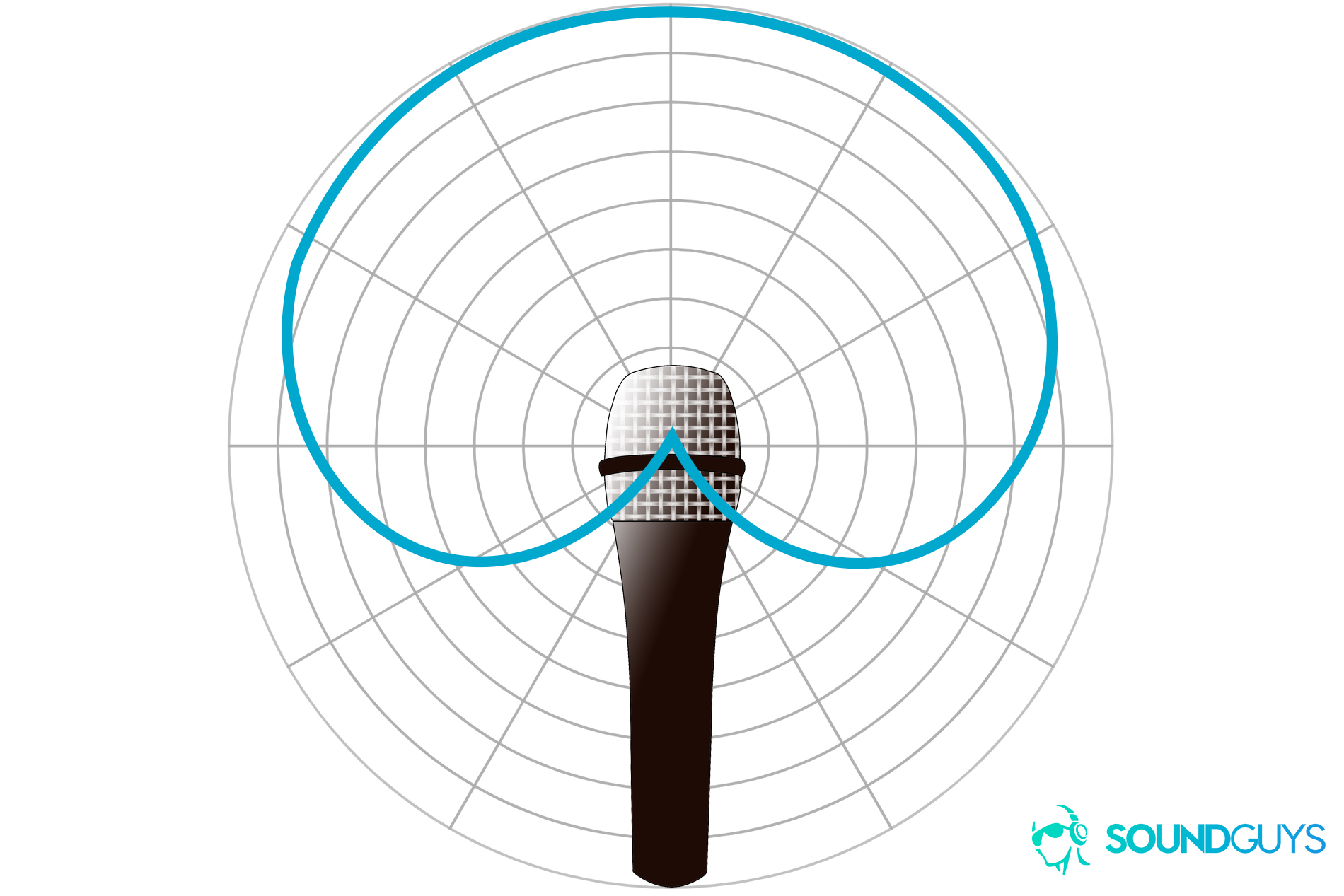
This is a condenser microphone, which is more sensitive than a dynamic microphone, and great at picking up the intricacies of vocal recordings in quieter settings. It has a cardioid polar pattern, so it records in a heart shape around the microphone—that is, it picks up sound mainly around the front and sides, and none from the back. While it only has one recording pattern, it’s still capable of getting a high-quality recording (24-bit/96kHz). The benefit to this high bit rate is that it affords plenty of leeway in post-production: you can make relatively drastic edits to your audio with a 24-bit file before noise becomes apparent.
Should you buy the Elgato Wave:3?
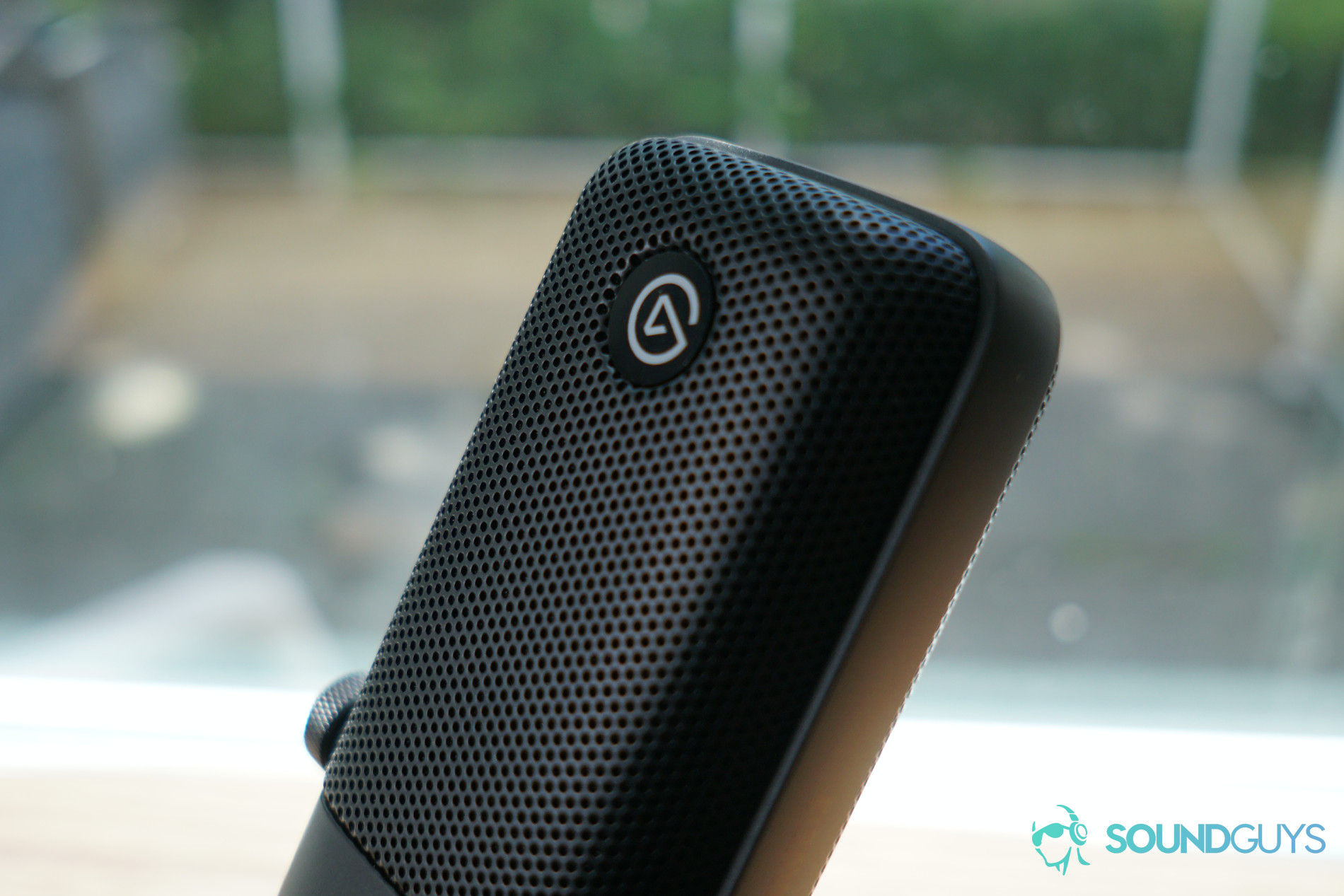
If you’re a Twitch streamer looking for something to make your life easier or you’re hesitant about shelling out for an audio interface, yes, you should get the Elgato Wave:3.
The Elgato Wave:3 is a compelling microphone. Its Clipguard feature and frequency response make it as close to an idiot-proof recording device as possible, given how much they mitigate the problems of getting too close to a microphone. The WaveLink software is very easy to use and has clear benefits for people like Twitch streamers. However, the Wave:3 isn’t perfect, and for non-streamers, it’s far less of a slam dunk. There are other options to consider.

What should you get instead of the Elgato Wave:3?
If you’re more of a podcaster or YouTuber than a Twitch streamer, having access to more than one polar pattern can be pretty useful. The Blue Yeti range of microphones offers some of the most versatile options on the market. They all offer multiple recording patterns, like cardioid, omnidirectional, bi-directional, and stereo. They’re all around the same price as the Elgato Wave:3 (or cheaper) too.
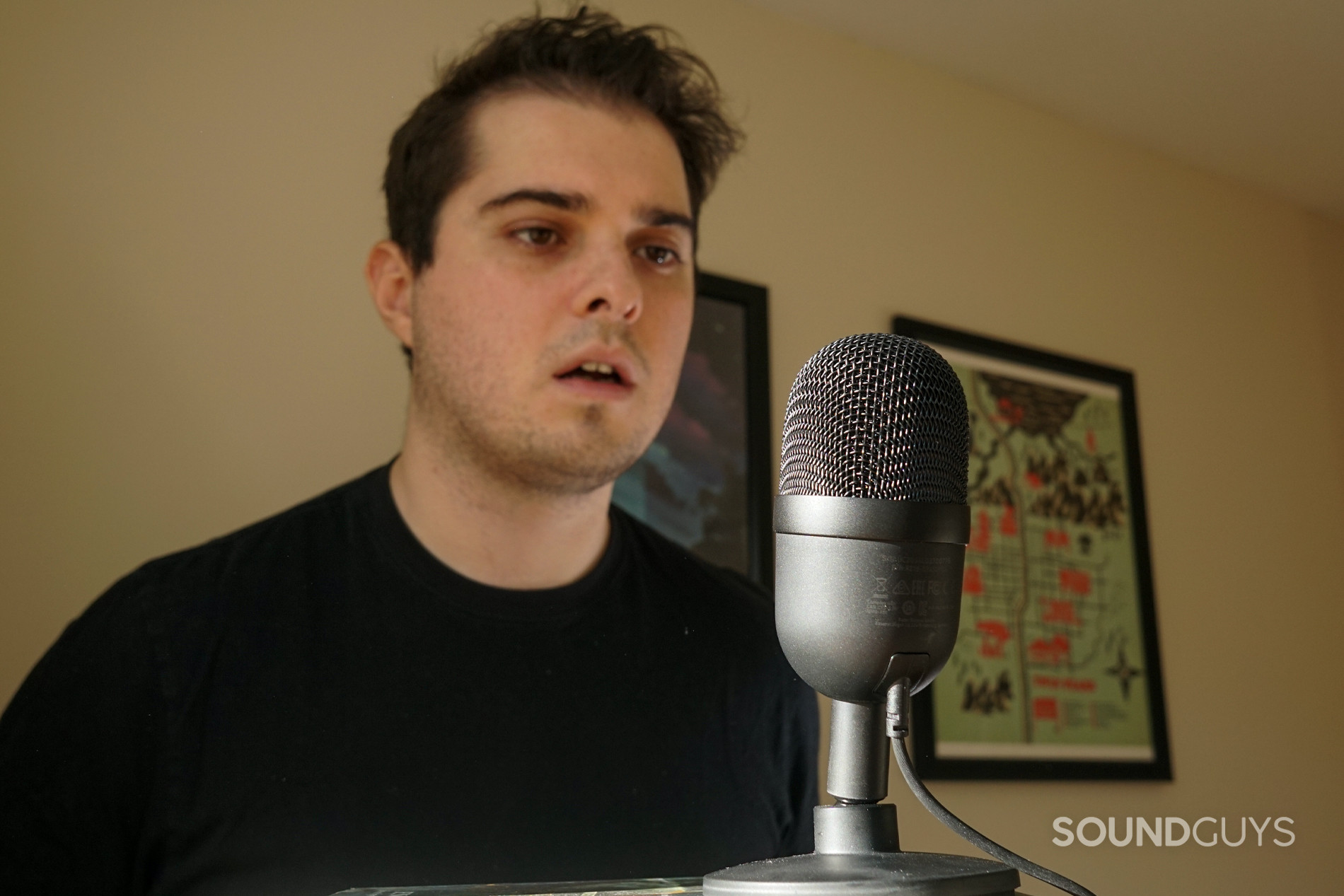
If you’re looking for something a little more self-contained, the HyperX Quadcast comes with a built-in pop filter. Like the Yeti, it also offers multiple polar patterns, though it still relies on a microUSB port. There are also recent compact, single polar pattern microphones to consider—the HyperX SoloCast and Razer Seiren Mini have very few features, but they’re both around $50 USD and offer very good sound for the price.
Maybe the budget isn’t as big as a concern, and you’re looking to get something that sounds a bit more hi-spec, the Elgato Wave DX is an affordable XLR microphone that sounds very nice. You’ll need an audio interface, but you can get the microphone bundled with the Elgato Wave XLR audio interface, along with an XLR cable and microphone stand for under $500 USD. That’s a big jump from the Elgato Wave:3, but it’s very reasonable price tag to put on a whole audio setup.
However, just because there are other options, doesn’t mean this isn’t a good option. If you’re someone struggling to keep a lot of audio sources organized, it’s arguably one of your best options.
Frequently asked questions about the Elgato Wave:3
The Elgato Wave:1 is $30 USD cheaper than the Wave:3 and has fewer hardware controls. With the Wave:1, you can only affect the headphone volume and mute control directly from the mic. For all else, you need to interact with the WaveLink software. On the Wave:3, you can control the headphone volume, input gain, mic/PC monitor crossfade. With the cheaper Wave:1, your sample rate is limited to 48kHz, whereas you get 96kHz recording sample rate on the Wave:3. Both mics record 24-bit audio.
If you want a very simple microphone that often retails for just $49 USD, you can’t go wrong with the Wave:1.
No. The Elgato Wave:3 microphone is a USB mic, and the only USB port on the Elgato Wave XLR is for powering the unit. The Wave XLR is for XLR microphones.